Seminars
Spring, 2025
Embodied Intelligence for Space Exploration with Foundation Models
Yue Wang
Assistant Professor
Thomas Lord Department of Computer Science
University of Southern California
Los Angeles, CA
Robotics has made remarkable strides, driven by advances in machine learning, optimal control, and hardware innovation. However, their applications to the space domains still face unique challenges: it is neither straightforward nor inherently scalable to train large machine learning models to enable these applications. To address this gap, our research endeavors to tackle these challenges through three principal directions: Simulation. Constructing photorealistic simulations that replicate space environments and enabling foundation model learning from synthetic or hybrid data sources. Perception. Leveraging geometric, semantic, and motional cues to develop data-efficient algorithms for robust scene perception and understanding in both simulated and real-world settings.
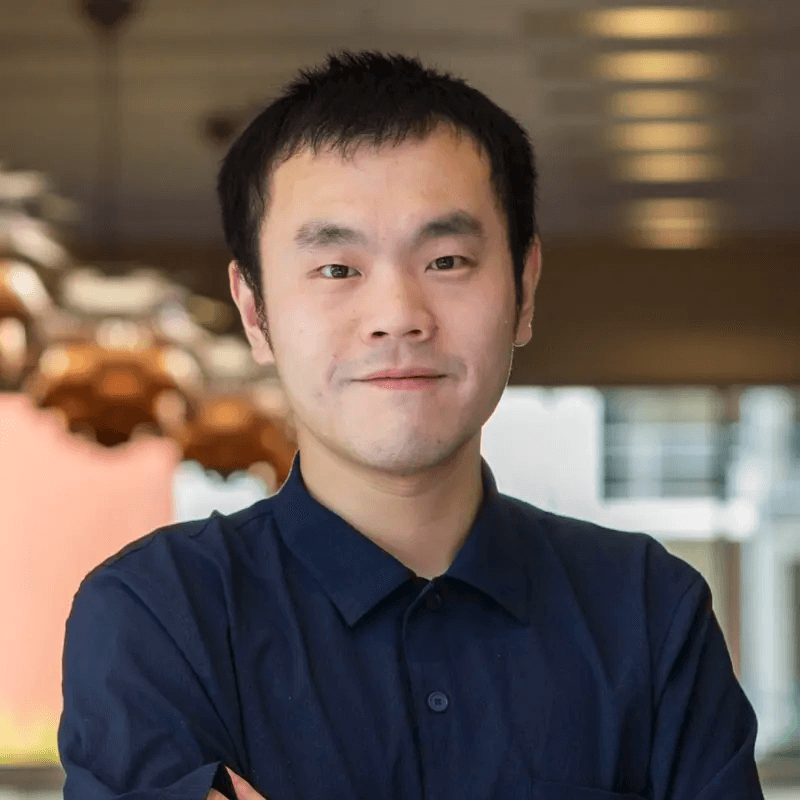 Yue Wang is an assistant professor at the computer science department and a faculty scientist at Nvidia Research. His lab is focusing on three major directions: 1) neural scene representations for robotics; 2) real-to-simulation-to-real transfer for robotics; 3) and robotic manipulation. He worked on 3D geometric deep learning during his PhD. His paper "Dynamic Graph CNN" has been widely adopted in 3D visual computing and beyond. He received the Powell Faculty Research Award, Toyota Young Faculty Researcher award, Nvidia Fellowship, the best paper award in geometric computing and graphics at the inaugural international congress of basic science, and the best paper nomination at the CVPR 2021 workshop on autonomous driving. He was also named the first place recipient of the William A. Martin Master’s Thesis Award for 2021. Yue received his bachelor from Zhejiang University, master from UCSD, and PhD from MIT. He has spent time at Nvidia Research, Google Research and Salesforce Research.
Yue Wang is an assistant professor at the computer science department and a faculty scientist at Nvidia Research. His lab is focusing on three major directions: 1) neural scene representations for robotics; 2) real-to-simulation-to-real transfer for robotics; 3) and robotic manipulation. He worked on 3D geometric deep learning during his PhD. His paper "Dynamic Graph CNN" has been widely adopted in 3D visual computing and beyond. He received the Powell Faculty Research Award, Toyota Young Faculty Researcher award, Nvidia Fellowship, the best paper award in geometric computing and graphics at the inaugural international congress of basic science, and the best paper nomination at the CVPR 2021 workshop on autonomous driving. He was also named the first place recipient of the William A. Martin Master’s Thesis Award for 2021. Yue received his bachelor from Zhejiang University, master from UCSD, and PhD from MIT. He has spent time at Nvidia Research, Google Research and Salesforce Research.
Wednesday, January 15, 2025
3:30 PM
Zumberg Hall, Room 252 (ZHS 252)
The Zoom webinar is at https://usc.zoom.us/j/96060458816?pwd=8LmoG2q6vBCQubqqWpcizd2F1bxqsH.1
host: Ronney
Ionics-Based Nanomanufacturing
Placid M. Ferreira
Tungchao Julia Lu Professor
Mechanical Science & Engineering Department
University of Illinois, Urbana-Champaign
Urbana, IL
Mechanics and transport at the micro- and nanoscale offer a rich set of controllable phenomena that can be exploited for the development of manufacturing processes compatible with these dimensional scales. Here, we exploit ionic transport in solids as the basis of highly controllable, efficient, high-resolution, high-throughput nanomanufacturing processes for producing metallic (specifically, silver and copper) nanostructures.
This talk will focus on the exploitation of the high room-temperature ionic conductivity in silver and copper-based superionic glasses as the basis of subtractive and additive nano-manufacturing processes such as superionic imprinting/stamping, roll patterning and direct writing. Taking a traditional manufacturing perspective, the talk will discuss tooling and tool materials; process characterization and rates; and tool wear with such processes. Applications and future directions towards photochemical patterning for ionics-based nanomanufacturing processes will also be discussed.
Placid M. Ferreira is the Tungchao Julia Lu Professor of Mechanical Science and Engineering at Illinois. From 2003 to 2009, he was the director of the Center for Chemical-Electrical-Mechanical Manufacturing Systems (Nano-CEMMS), an NSF-sponsored Nanoscale Science and Engineering Center after which he served as the Head of the Department of Mechanical Science and Engineering at Illinois until August 2015. He currently leads the Center for Networked Intelligent Components and Environments, a translational research collaboration between the University of Illinois and Foxconn Interconnect Technology.
Professor Ferreira graduated with a PhD in Industrial Engineering from Purdue University in 1987, M.Tech (Mechanical) from IIT Bombay, 1982 and B.E. (Mechanical) for University of Bombay in 1980. He has been on the mechanical engineering faculty at Illinois since 1987, serving as the associate head for graduate programs and research from 1999 to 2002. Professor Ferreira's research and teaching interests are in precision manufacturing and includes computer-controlled machines, nano-manufacturing and metrology. Professor Ferreira received NSF's Presidential Young Investigator Award in 1990, SME's Outstanding Young Investigator Award in 1991, University of Illinois' University Scholar Award in 1994, ASME’s Ennor Award for Manufacturing Technology in 2014. He is also a Fellow of ASME, SME and AAAS. He has served on the editorial board of a number of manufacturing-related journals.
Wednesday, January 22, 2025
3:30 PM
Zumberg Hall, Room 252 (ZHS 252)
The Zoom webinar is at https://usc.zoom.us/j/96060458816?pwd=8LmoG2q6vBCQubqqWpcizd2F1bxqsH.1
host: Zhao
Generative Algorithms for Assimilation of Multiresolution Satellite Data for Wildfire Forecast Initialization
Assad A. Oberai
Hughes Professor and Professor of Aerospace and Mechanical Engineering
Department of Aerospace & Mechanical Engineering
University of Southern California
Increased wildfire prevalence has led to the development of sophisticated coupled atmosphere-wildfire spread models. Additionally, advances in the use of geostationary and polar orbiting satellites for wildfire detection provide multiple sources of measurement data which can be used to improve model forecasts through data assimilation. Performing wildfire forecast with coupled atmosphere-wildfire models requires a detailed time-history of the initial fire trajectory, which is used to initialize the wildfire and atmosphere states. This history is encoded in the high-resolution fire arrival time, which provides the time fire reaches any location in the domain. Additionally, satellite measurements provide sparse and noisy measurements of the arrival time at much coarser resolutions. In this talk we describe how, by posing this problem as a probabilistic inverse problem, we can combine measurements from various sources with a physics-driven wildfire simulator to obtain a high-resolution probabilistic version of the fire arrival time. I will apply this approach to several historical fires, including the recent Eaton fire in Altadena.
Authors: Bryan Shaddy1 (bshaddy@usc.edu), Brianna Binder1 (bjbinder@usc.edu), Agnimitra Dasgupta1 (adasgupt@usc.edu), Angel Farguell Caus2 (angel.farguellcaus@sjsu.edu), Kyle Hilbrun3 (kyle.hilburn@colostate.edu), Jan Mandel4 (jan.mandel@ucdenver.edu), Adam Kochanski2 (adam.kochanski@sjsu.edu), Assad Oberai1 (aoberai@usc.edu)
1 University of Southern California; 2 San Jose State University; 3 Colorado State University; 4 University of Colorado, Denver
Wednesday, January 29, 2025
3:30 PM
Zumberg Hall, Room 252 (ZHS 252)
The Zoom webinar is at https://usc.zoom.us/j/96060458816?pwd=8LmoG2q6vBCQubqqWpcizd2F1bxqsH.1
Stabilized Finite Element Methods for Modeling Incompressible and Compressible Flows
Artem Korobenko
Associate Professor
Department of Mechanical and Manufacturing Engineering
University of Calgary
Calgary, Alberta, Canada
In this talk, recent developments in stabilized and variational multiscale (VMS) methods for fluid mechanics utilizing finite-element discretization will be presented. Both incompressible and compressible flow problems will be discussed. The numerical framework, developed by the CFSMgroup at the University of Calgary (https://www.cfsmgroup.com/), solves the Navier-Stokes equations. For compressible flows, a two-temperature model for non-ionized reacting flows in thermochemical non-equilibrium is employed. The equations are solved using the pressure-primitive set of variables, combined with a residual-based shock capturing operator and the Streamline-Upwind Petrov–Galerkin (SUPG) stabilization techniques. For incompressible flows, the Navier-Stokes equations are coupled with a transport equation for either vapor/volume fraction (for multiphase flows) or temperature (for stratified flows). The VMS method is adopted for turbulence modeling, operating as an LES-like approach and eliminating the need for filters or artificial dissipation. The formulation supports both linear finite elements and quadratic NURBS discretization. Enhanced stability and accuracy near walls are achieved through the weak imposition of boundary conditions, akin to classical wall modeling approaches.
The robustness and accuracy of this framework will be demonstrated through a range of challenging applications, including simulations of vertical-axis hydrokinetic turbines in turbulent flow with free surfaces, full-scale and geometrically complex cavitating flow simulations, wind farm modeling under stable atmospheric boundary layers, flow over complex terrains, double-cone and hollow cylinder extended flare configurations, and re-entry vehicles. Validation is provided through comparisons with existing numerical and experimental data from the literature.
 Artem Korobenko is an Associate Professor and Associate Head, Research at the Department of Mechanical and Manufacturing Engineering at the University of Calgary (Canada). He holds a Schulich Research Chair and leads the Computational Fluids and Structural Mechanics Group (CFSMgroup). Dr. Korobenko earned his PhD in 2014, followed by a postdoctoral position (2016), both at the University of California San Diego. His research focuses on the development of multi-fidelity computational methods for the analysis and design of complex systems in aerospace, wind and marine engineering using large-scale computing. A Fulbright Alumni and Alexander von Humboldt Fellowship recipient, Dr. Korobenko is a founding member and current president of the Canadian Association for Computational Science and Engineering, as well as a Member-at-Large of the USACM Technical Thrust Area on Computational Fluid Dynamics and Fluid-Structure Interaction. He is also a founding member and co-director of the University of Calgary Aerospace Network.
Artem Korobenko is an Associate Professor and Associate Head, Research at the Department of Mechanical and Manufacturing Engineering at the University of Calgary (Canada). He holds a Schulich Research Chair and leads the Computational Fluids and Structural Mechanics Group (CFSMgroup). Dr. Korobenko earned his PhD in 2014, followed by a postdoctoral position (2016), both at the University of California San Diego. His research focuses on the development of multi-fidelity computational methods for the analysis and design of complex systems in aerospace, wind and marine engineering using large-scale computing. A Fulbright Alumni and Alexander von Humboldt Fellowship recipient, Dr. Korobenko is a founding member and current president of the Canadian Association for Computational Science and Engineering, as well as a Member-at-Large of the USACM Technical Thrust Area on Computational Fluid Dynamics and Fluid-Structure Interaction. He is also a founding member and co-director of the University of Calgary Aerospace Network.
Friday, February 14, 2024
12:00 PM
Laufer Conference Room (OHE 406)
The Zoom webinar is at https://usc.zoom.us/j/96060458816?pwd=8LmoG2q6vBCQubqqWpcizd2F1bxqsH.1
host: Oberai
Learning-based Model-Free Sensor and Actuator Selection in Intelligent Complex Adaptive Systems
Kyriakos G. Vamvoudakis
Dutton-Ducoffe Endowed Professor
Daniel Guggenheim School of Aerospace Engineering
Georgia Institute of Technology
Atlanta, GA
Intelligent complex adaptive systems (ICAS) are heterogeneous systems that integrate analog and digital components, along with communication channels through which these components exchange data. Some of the prime components of an ICAS -- having a measurable impact on its operational efficiency and productivity -- are its sensors and actuators. These are the devices that allow the ICAS to collect data from its environment, as well as to use these data to steer itself toward a desirable direction. Generally speaking, they should be carefully selected to ensure that the system has a good level of observability and controllability, though additional specifications may also be placed depending on the underlying application's specifics. This problem of properly choosing the ICAS' sensors (or actuators) is called the sensor (or actuator) selection problem. In this talk, I will present data driven actuator and sensor selection algorithms, which choose the actuators and sensors of the ICAS while maximizing resiliency. Specifically, model-free learning-based actuator and sensor selection schemes will be proposed to optimize metrics of controllability, observability, and attack resilience for ICAS. I will show how you can use reinforcement learning to select such sensors and actuators with state and output feedback in continuous and discrete-time systems. I will finally present simulation examples with large-scale systems.
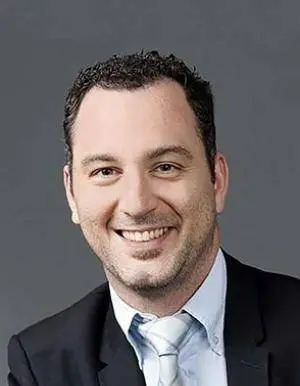 Kyriakos G. Vamvoudakis was born in Athens, Greece. He received the Diploma (a 5-year degree, equivalent to a Master of Science) in Electronic and Computer Engineering from the Technical University of Crete, Greece in 2006 with highest honors. After moving to the United States of America, he studied at The University of Texas at Arlington with Frank L. Lewis as his advisor, and he received his M.S. and Ph.D. in Electrical Engineering in 2008 and 2011 respectively. During the period from 2012 to 2016 he was project research scientist at the Center for Control, Dynamical Systems and Computation at the University of California, Santa Barbara. He was an assistant professor at the Kevin T. Crofton Department of Aerospace and Ocean Engineering at Virginia Tech until 2018. He currently serves as the Dutton-Ducoffe Endowed Professor at The Daniel Guggenheim School of Aerospace Engineering at Georgia Tech. His expertise is in reinforcement learning, control theory, game theory, cyber-physical security, bounded rationality, and safe/assured autonomy. Dr. Vamvoudakis is the recipient of a 2019 ARO YIP award, a 2018 NSF CAREER award, a 2018 DoD Minerva Research Initiative Award, a 2021 GT Chapter Sigma Xi Young Faculty Award and his work has been recognized with best paper nominations and several international awards including the 2016 International Neural Network Society Young Investigator (INNS) Award, the Best Paper Award for Autonomous/Unmanned Vehicles at the 27th Army Science Conference in 2010, the Best Presentation Award at the World Congress of Computational Intelligence in 2010, and the Best Researcher Award from the Automation and Robotics Research Institute in 2011. He currently is a member of the IEEE Control Systems Society Conference Editorial Board, an Associate Editor of: Automatica; IEEE Transactions on Automatic Control; IEEE Transactions on Neural Networks and Learning Systems; IEEE Computational Intelligence Magazine; IEEE Transactions on Systems, Man, and Cybernetics: Systems; IEEE Transactions on Artificial Intelligence; Neurocomputing; Journal of Optimization Theory and Applications; and of Frontiers in Control Engineering-Adaptive, Robust and Fault Tolerant Control. He had also served as a Guest Editor for, IEEE Transactions on Automation Science and Engineering (Special issue on Learning from Imperfect Data for Industrial Automation); IEEE Transactions on Neural Networks and Learning Systems (Special issue on Reinforcement Learning Based Control: Data-Efficient and Resilient Methods); IEEE Transactions on Industrial Informatics (Special issue on Industrial Artificial Intelligence for Smart Manufacturing); and IEEE Transactions on Intelligent Transportation Systems (Special issue on Unmanned Aircraft System Traffic Management). He is also a registered Electrical/Computer engineer (PE), a member of the Technical Chamber of Greece, an Associate Fellow of AIAA, and a Senior Member of IEEE.
Kyriakos G. Vamvoudakis was born in Athens, Greece. He received the Diploma (a 5-year degree, equivalent to a Master of Science) in Electronic and Computer Engineering from the Technical University of Crete, Greece in 2006 with highest honors. After moving to the United States of America, he studied at The University of Texas at Arlington with Frank L. Lewis as his advisor, and he received his M.S. and Ph.D. in Electrical Engineering in 2008 and 2011 respectively. During the period from 2012 to 2016 he was project research scientist at the Center for Control, Dynamical Systems and Computation at the University of California, Santa Barbara. He was an assistant professor at the Kevin T. Crofton Department of Aerospace and Ocean Engineering at Virginia Tech until 2018. He currently serves as the Dutton-Ducoffe Endowed Professor at The Daniel Guggenheim School of Aerospace Engineering at Georgia Tech. His expertise is in reinforcement learning, control theory, game theory, cyber-physical security, bounded rationality, and safe/assured autonomy. Dr. Vamvoudakis is the recipient of a 2019 ARO YIP award, a 2018 NSF CAREER award, a 2018 DoD Minerva Research Initiative Award, a 2021 GT Chapter Sigma Xi Young Faculty Award and his work has been recognized with best paper nominations and several international awards including the 2016 International Neural Network Society Young Investigator (INNS) Award, the Best Paper Award for Autonomous/Unmanned Vehicles at the 27th Army Science Conference in 2010, the Best Presentation Award at the World Congress of Computational Intelligence in 2010, and the Best Researcher Award from the Automation and Robotics Research Institute in 2011. He currently is a member of the IEEE Control Systems Society Conference Editorial Board, an Associate Editor of: Automatica; IEEE Transactions on Automatic Control; IEEE Transactions on Neural Networks and Learning Systems; IEEE Computational Intelligence Magazine; IEEE Transactions on Systems, Man, and Cybernetics: Systems; IEEE Transactions on Artificial Intelligence; Neurocomputing; Journal of Optimization Theory and Applications; and of Frontiers in Control Engineering-Adaptive, Robust and Fault Tolerant Control. He had also served as a Guest Editor for, IEEE Transactions on Automation Science and Engineering (Special issue on Learning from Imperfect Data for Industrial Automation); IEEE Transactions on Neural Networks and Learning Systems (Special issue on Reinforcement Learning Based Control: Data-Efficient and Resilient Methods); IEEE Transactions on Industrial Informatics (Special issue on Industrial Artificial Intelligence for Smart Manufacturing); and IEEE Transactions on Intelligent Transportation Systems (Special issue on Unmanned Aircraft System Traffic Management). He is also a registered Electrical/Computer engineer (PE), a member of the Technical Chamber of Greece, an Associate Fellow of AIAA, and a Senior Member of IEEE.
Wednesday, February 19, 2025
3:30 PM
Zumberg Hall, Room 252 (ZHS 252)
The Zoom webinar is at https://usc.zoom.us/j/96060458816?pwd=8LmoG2q6vBCQubqqWpcizd2F1bxqsH.1
host: Nguyen
From Neurological Disorders to Additive Manufacturing: Integrating isogeometric analysis with deep learning and digital twins
Jessica Zhang
George Tallman Ladd and Florence Barrett Ladd Professor
Department of Mechanical Engineering
Carnegie Mellon University
Pittsburg, PA
For neurological disorders, a novel phase field model is introduced, simulating neurite outgrowth and disorders using IGA. Combining IGA with convolutional neural networks, the talk analyzes key parameters affecting neurodevelopmental disorders and presents a PDE-constrained optimization model for neurodegenerative disorders. Additionally, an IGA-based physics-informed graph neural network is developed to predict intracellular transport in complex neuron geometries.
This talk explores the integration of physics-based simulations with data-driven modeling, focusing on isogeometric analysis (IGA), deep learning, and digital twins for two main applications: neurological disorders and additive manufacturing (AM). In the AM domain, the talk covers AI-driven inverse design for 4D printing, IGA-based topology optimization for heat exchangers, and rapid geometry distortion prediction in metal printing processes. Ongoing efforts include developing digital twins for efficient process control in laser powder bed fusion (LPBF) manufacturing.
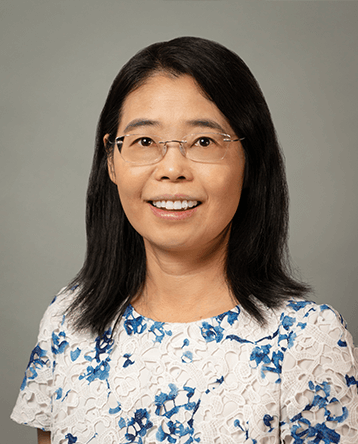 Jessica Zhang is the George Tallman Ladd and Florence Barrett Ladd Professor of Mechanical Engineering at Carnegie Mellon University, with a courtesy appointment in Biomedical Engineering. She earned her B.Eng. in Automotive Engineering and M.Eng. in Engineering Mechanics from Tsinghua University, and her M.Eng. in Aerospace Engineering and Ph.D. in Computational Engineering and Sciences from The University of Texas at Austin. Her research interests include computational geometry, isogeometric analysis, the finite element method, data-driven simulations, and image processing, with a strong focus on their applications in computational biomedicine and engineering. Zhang has co-authored over 230 publications in peer-reviewed journals and conference proceedings and is the author of the book Geometric Modeling and Mesh Generation from Scanned Images (CRC Press). Her work spans both theoretical development and practical applications, contributing significantly to advancements in both fields. She is a Fellow of prominent societies, including ASME, SIAM, IACM, USACM, IAMBE, AIMBE, SMA, and ELATES at Drexel, highlighting her distinguished reputation in the field. Currently, she serves as the Editor-in-Chief of Engineering with Computers, further establishing her leadership in computational science and engineering research.
Jessica Zhang is the George Tallman Ladd and Florence Barrett Ladd Professor of Mechanical Engineering at Carnegie Mellon University, with a courtesy appointment in Biomedical Engineering. She earned her B.Eng. in Automotive Engineering and M.Eng. in Engineering Mechanics from Tsinghua University, and her M.Eng. in Aerospace Engineering and Ph.D. in Computational Engineering and Sciences from The University of Texas at Austin. Her research interests include computational geometry, isogeometric analysis, the finite element method, data-driven simulations, and image processing, with a strong focus on their applications in computational biomedicine and engineering. Zhang has co-authored over 230 publications in peer-reviewed journals and conference proceedings and is the author of the book Geometric Modeling and Mesh Generation from Scanned Images (CRC Press). Her work spans both theoretical development and practical applications, contributing significantly to advancements in both fields. She is a Fellow of prominent societies, including ASME, SIAM, IACM, USACM, IAMBE, AIMBE, SMA, and ELATES at Drexel, highlighting her distinguished reputation in the field. Currently, she serves as the Editor-in-Chief of Engineering with Computers, further establishing her leadership in computational science and engineering research.
Wednesday, February 26, 2025
3:30 PM
Zumberg Hall, Room 252 (ZHS 252)
The Zoom webinar is at https://usc.zoom.us/j/96060458816?pwd=8LmoG2q6vBCQubqqWpcizd2F1bxqsH.1
From Folding to Scaling: A Tour Through Nonlinear Mechanics
Huan Liu
Drinkward Postdoctoral Fellow
Department of Mechanical and Civil Engineering
California Institute of Technology
Pasadena, CA
Origami, the art of folding paper into intricate shapes, has growing practical applications across fields such as architectural design, therapeutics, deployable space structures, antenna design, and soft robotics. One promising yet largely unexplored area is curved tile origami, which can store elastic energy, offering opportunities to develop next-generation functional materials, structures, and actuators. In the first part of my talk I will present a general theory of curved origami and systematic design methods for constructing large-scale, complex curved origami structures. Additionally, I will present methods to accurately calculate the stored elastic energy and the folding motions of curved origami, and I will illustrate my theoretical results by presenting some complex structures I have folded. This theory has inspired applications of curved origami in fields ranging from medical devices to a vertical-axis wind turbine, to architected materials.
These applications typically involve interacting fluids, highly deformable elastic solids and rigid bodies, and it would be useful in many situations to define dynamically similar surrogates. In the second part of this talk I will present an accepted macroscale system of partial differential equations including fully coupled incompressible Navier-Stokes fluid dynamics, quite general nonlinear elasticity, and rigid body mechanics for a complex mechanical system, and show by rigorous reasoning that there is a set of scaling laws where length, time, density, elastic modulus, viscosity, and gravitational constant undergo nontrivial scaling. I have applied these laws to a diverse range of systems in nature, including birds, fish, mammals, reptiles, amphibians, crustaceans, microorganisms, and plants. The uniform agreement of the scaling laws with the dynamics of fauna, flora, and microorganisms supports the dominating role of coupled nonlinear elasticity and fluid dynamics in evolutionary development. I will also present the predictions for some prehistoric cases for which observations are unavailable, as well as applications to space exploration.
Overall, my talk illustrates that nonlinear mechanics is a powerful predictive tool to address the complexity of modern engineering problems.
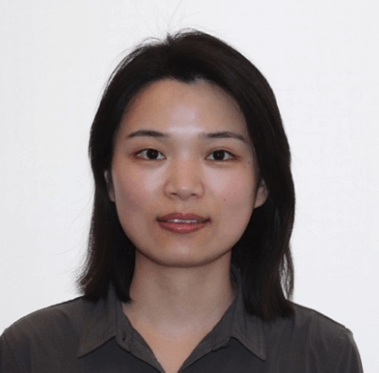 Huan Liu is a Drinkward Postdoctoral Fellow at California Institute of Technology. Prior her postdoc, she received her Ph.D. in Aerospace Engineering and Mechanics from University of Minnesota in 2024. She is also a co-founder of WhirrlEnergy LLC, a startup focused on revolutionizing the wind energy industry by producing clean energy through a highly optimized vertical-axis wind turbine. Her interests are focused on understanding the complex nonlinear mechanics in materials, structures, and coupled mechanical systems, discovering new materials and structures, and fostering sustainability.
Huan Liu is a Drinkward Postdoctoral Fellow at California Institute of Technology. Prior her postdoc, she received her Ph.D. in Aerospace Engineering and Mechanics from University of Minnesota in 2024. She is also a co-founder of WhirrlEnergy LLC, a startup focused on revolutionizing the wind energy industry by producing clean energy through a highly optimized vertical-axis wind turbine. Her interests are focused on understanding the complex nonlinear mechanics in materials, structures, and coupled mechanical systems, discovering new materials and structures, and fostering sustainability.
Wednesday, March 5, 2025
3:30 PM
Zumberg Hall, Room 252 (ZHS 252)
The Zoom webinar is at https://usc.zoom.us/j/96060458816?pwd=8LmoG2q6vBCQubqqWpcizd2F1bxqsH.1
host: Ronney
Liquid Crystalline Elastomers for Reversible Actuation and Energy Dissipation
Mohand Saed
University Royal Society Fellow
Cavendish Laboratory
Cambridge University
Cambridge
Liquid crystalline elastomers (LCEs) are a versatile class of functional materials exhibiting exceptional properties, including large-stroke reversible actuation, anomalous mechanical energy damping, and reversible pressure-sensitive adhesion. A defining feature of LCEs is their soft elasticity, characterized by a plateau of low, nearly constant stress during stretching, slow stress relaxation, and enhanced surface adhesion. This presentation explores the potential of LCEs in actuator applications and highlights their intrinsic energy dissipation mechanisms, particularly in reversible adhesion and vibration damping.
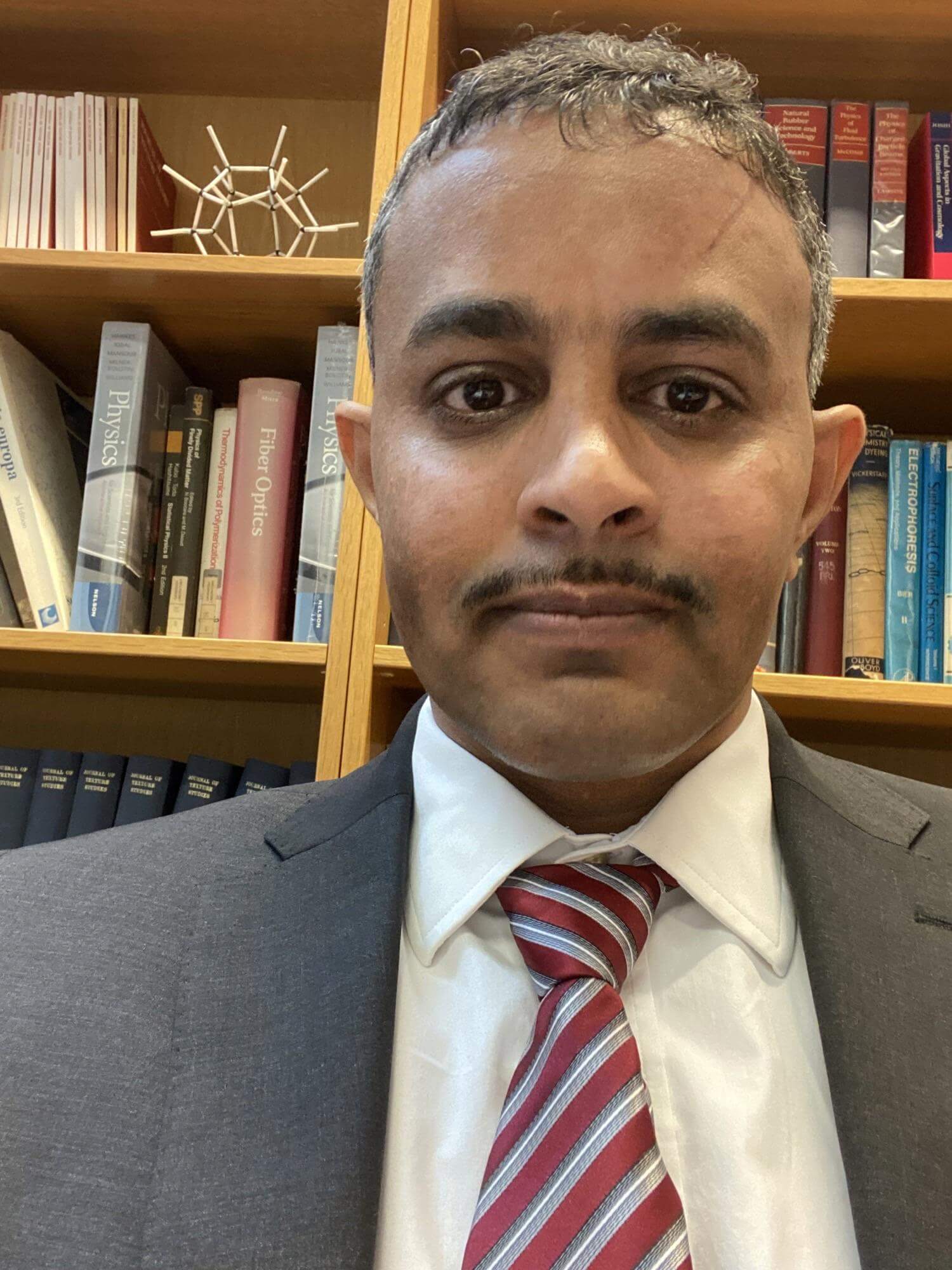 Mohand Saed is a University Royal Society Fellow and a group leader at the Cavendish Laboratory, University of Cambridge, specializing in smart, sustainable, and stimuli-responsive polymers. His research spans new material design, additive manufacturing, vitrimers, adhesives, and liquid crystalline elastomers (LCEs).
Mohand Saed is a University Royal Society Fellow and a group leader at the Cavendish Laboratory, University of Cambridge, specializing in smart, sustainable, and stimuli-responsive polymers. His research spans new material design, additive manufacturing, vitrimers, adhesives, and liquid crystalline elastomers (LCEs).
Over a decade-long academic career, Dr. Saed has made pioneering contributions to polymer science. During his PhD at the University of Colorado, he played a crucial role in overcoming synthesis challenges in LCEs, introducing click chemistry for scalable production. His dissertation led to seven publications and a US patent, revolutionizing the field. As a postdoctoral researcher at the University of Texas, he expanded into 3D printing and microfabrication, developing a 4D printing technique for LCEs, now widely adopted. This work resulted in three papers and another US patent.
At Cambridge, Dr. Saed has published over 30 original papers, filed four patents, and secured over £2 million in research funding. He co-founded Cambridge Smart Plastics Ltd, serving as Chief Technical Officer, to commercialize vitrimer technologies developed during his tenure.
As of March 2025, he has 43 original papers, 6 patents (3 granted, 3 filed), 2,900 citations, and an H-index of 26. His research is featured in leading journals such as Chemical Reviews, Nature Communications, and Advanced Materials.
Wednesday, March 12, 2025
3:30 PM
Zumberg Hall, Room 252 (ZHS 252)
host: Maghsoodi
Origami Wrapping Patterns: Out of the Plane and towards Spacecraft Applications
Manan Arya
Assistant Professor
Department of Aeronautics and Astronautics
Stanford University
Stanford, CA
Origami wrapping patterns take flat sheets of material and wrap them around a central hub. Structures based on such origami patterns have been advanced for deployable spacecraft elements, such as antennas and starshades. In this talk, we will explore two extensions of this idea to unfolded forms that are inherently non-planar: (1) corrugated polyhedral surfaces with non-zero angular defects at each vertex, and (2) smooth doubly-curved surfaces with curved creases. Structures based on these forms have applications as deployable spacecraft solar arrays and radio-frequency reflectors. We will discuss the design of algorithms to generate the forms and fold patterns, numerical models of structural performance, and physical realizations and testing. Finally, we will briefly assess their performance as spacecraft components.
 Manan Arya is an Assistant Professor in the Department of Aeronautics and Astronautics at Stanford University. There, he directs the Morphing Space Structures Lab, which develops and matures novel high-performance lightweight shape-changing spacecraft structures. Prior to joining Stanford, Manan was a Technologist at the Jet Propulsion Laboratory, California Institute of Technology. He received his PhD from the California Institute of Technology.
Manan Arya is an Assistant Professor in the Department of Aeronautics and Astronautics at Stanford University. There, he directs the Morphing Space Structures Lab, which develops and matures novel high-performance lightweight shape-changing spacecraft structures. Prior to joining Stanford, Manan was a Technologist at the Jet Propulsion Laboratory, California Institute of Technology. He received his PhD from the California Institute of Technology.
Wednesday, March 26, 2025
3:30 PM
Zumberg Hall, Room 252 (ZHS 252)
host: Plucinski
Biomimetic, Biohybrid, and Biodegradable: Robots for a sustainable future
Vickie Webster-Wood
Associate Professor
Department of Mechanical Engineering
Carnegie Mellon University
Pittsburgh, PA
In the last century it was common to envision robots of the future as shining metal structures with rigid and halting motion. This imagery is in sharp contrast to the fluid and organic motion of living organisms that inhabit our natural world. As robotics has advanced, animals are often turned to for inspiration. However, the adaptability, complex control, and advanced learning capabilities observed in animals are not yet fully understood, and therefore have not been fully captured by current robotic systems. Furthermore, many of the mechanical properties and physical capabilities seen in animals have yet to be achieved in robotic platforms. In this talk, I will share efforts from my group in Biomimetic, Biohybrid, and Biodegradable robotics. By using neuromechanical models and bioinspired robots as tools for basic research we are developing new models of how animals achieve multifunctional, adaptable behaviors. Building on our understanding of animal systems and living tissues, our research in biohybrid robotics is enabling new approaches toward the creation of autonomous biodegradable living robots. Finally, by using farmable plant-based materials, we can now create robotic components that are fully degradable in natural environments. These robotic systems have future applications as sustainable platforms for medicine, search and rescue, and environmental monitoring of sensitive environments.
Vickie Webster-Wood is an Associate Professor in the Department of Mechanical Engineering at Carnegie Mellon University with courtesy appointments in the Department of Biomedical Engineering, the McGowan Institute of Regenerative Medicine, and the Robotics Institute. She is the director of the C.M.U. Biohybrid and Organic Robotics Group and has a long-term research goal to develop completely organic, biodegradable, autonomous robots. Research in the C.M.U. B.O.R.G. brings together bio-inspired robotics, tissue engineering, and computational neuroscience to study and model neuromuscular control and translate findings to the creation of renewable robotic devices. Dr. Webster-Wood completed her postdoc at Case Western Reserve University in the Tissue Fabrication and Mechanobiology Lab under the direction of Dr. Ozan Akkus. During her postdoc, Dr. Webster-Wood was supported by the T32 Training Grant in Musculoskeletal Research. She received her Ph.D. in Mechanical Engineering from the same institution as an N.S.F. Graduate Research Fellow in the Biologically Inspired Robotics Lab, during which time she was co-advised by Drs. Roger Quinn, Ozan Akkus, and Hillel Chiel. She received the NSF CAREER Award in 2021 and leads the SSymBioTIC MURI on Integrated Biohybrid Actuators team. She is also a co-PI of the N.S.F. NeuroNex Network on Communication, Coordination, and Control in Neuromechanical Systems (C3NS), and has received additional funding from the NSF Foundational Research in Robotics Program, a PITA grant from the Commonwealth of Pennsylvania, Department of Community and Economic Development, as well as funding from the PA Manufacturing Initiative, and the Manufacturing Futures Initiative.
Thursday, March 27, 2024
10:00 AM
The Laufer Conference Room (OHE 406)
host: Kanso
Non-Equilibrium Stimuli-Responsive Soft Materials
Lihua Jin
Associate Professor
Department of Mechanical and Aerospace Engineering
UCLA
Los Angeles, CA
One recent impetus of developing stimuli-responsive soft materials (SRSMs) is to use them for sensors, actuators and soft robots. In these applications, mechanics and multi-physics fields are intrinsically coupled through non-equilibrium thermodynamic processes, including diffusion, reaction, viscoelastic relaxation, etc. The non-equilibrium processes of SRSMs not only determine their response speeds, but also govern how SRSMs spatiotemporally evolve their properties and structures. In this talk, using hydrogels, shape memory polymers, humidity-responsive polymers and liquid crystal elastomers as model SRSMs, I will present a few of our recent studies on programing the spatiotemporal properties, shapes, and locomotion of SRSMs through non-equilibrium processes. First, I will describe how mechanical stress can be used to induce and tune the phase separation processes of hydrogels. Second, I will show that the fracture properties and behavior of SRSMs are also highly intertwined with their non-equilibrium processes. Finally, by utilizing the displacement of SRSMs to alter their interaction with external stimuli, we are able to achieve complex and autonomous motion of SRSMs.
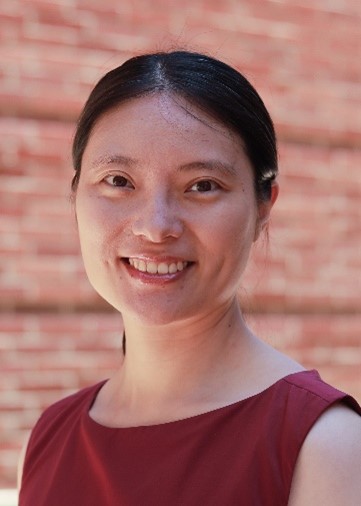 Lihua Jin is an associate professor in the Department of Mechanical and Aerospace Engineering at the University of California, Los Angeles (UCLA). Before joining UCLA in 2016, she was a postdoctoral scholar at Stanford University. In 2014, she obtained her PhD degree in Engineering Sciences from Harvard University. Prior to that, she earned her Bachelor’s and Master’s degrees from Fudan University. Lihua conducts research on mechanics of soft materials, stimuli-responsive materials, instability and fracture, soft robotics, and biomechanics. She was the winner of the Haythornthwaite Research Initiative Grant, Extreme Mechanics Letters Young Investigator Award, Hellman Fellowship, NSF CAREER Award, ACS PMSE Early Investigator Award, Sia Nemat-Nasser Early Career Award, and SES Huajian Gao Young Investigator Medal.
Lihua Jin is an associate professor in the Department of Mechanical and Aerospace Engineering at the University of California, Los Angeles (UCLA). Before joining UCLA in 2016, she was a postdoctoral scholar at Stanford University. In 2014, she obtained her PhD degree in Engineering Sciences from Harvard University. Prior to that, she earned her Bachelor’s and Master’s degrees from Fudan University. Lihua conducts research on mechanics of soft materials, stimuli-responsive materials, instability and fracture, soft robotics, and biomechanics. She was the winner of the Haythornthwaite Research Initiative Grant, Extreme Mechanics Letters Young Investigator Award, Hellman Fellowship, NSF CAREER Award, ACS PMSE Early Investigator Award, Sia Nemat-Nasser Early Career Award, and SES Huajian Gao Young Investigator Medal.
Wednesday, April 2, 2025
3:30 PM
Zumberg Hall, Room 252 (ZHS 252)
host: Plucinsky
Hypersonic Boundary Layer Transition over Blunt Cones
Pedro Paredes
Research Scientist
Computational AeroSciences Branch
NASA Langley Research Center
Hampton, Virginia
The linear amplification of modal Mack-mode disturbances that lead to boundary-layer transition in two-dimensional/axisymmetric hypersonic configurations is strongly reduced by the presence of a blunt nosetip. The mechanisms underlying the low Mack-mode N-factor values at the observed onset of transition over the cone frustum are currently unknown. As the nose bluntness is increased beyond the critical nose Reynolds number for transition reversal, the transition location rapidly moves upstream, and transition appears to depend on uncontrolled disturbances due to nosetip roughness. Linear nonmodal analysis has shown that both planar and oblique traveling disturbances that peak within the entropy layer experience appreciable energy amplification for moderate to large nosetip bluntness. Nonlinear nonmodal analysis shows that planar entropy-layer disturbances excited near the nose tip can excite the high frequency Mack-mode disturbances and hence, can lead to a reduction in the transition N-factor. Digital wind-tunnel simulations are conducted via direct numerical simulations (DNS) to understand the effects of freestream acoustic disturbances in transition over blunt cones during a conventional tunnel experiment. The results confirm the appearance of entropy-layer disturbances predicted by linear nonmodal analysis and the numerical schlieren contours show the inclined structures predicted by nonlinear nonmodal analysis and observed in experiments.
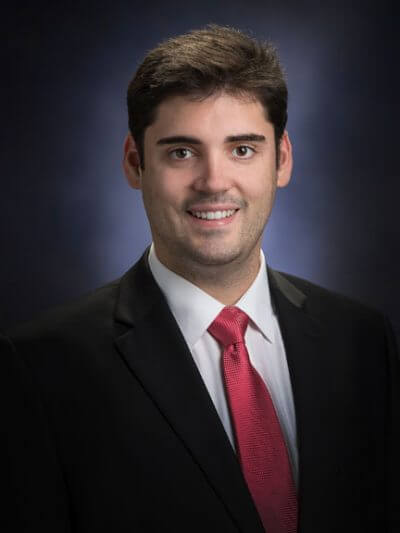 Pedro Paredes is a Research Scientist at the Computational AeroSciences Branch of the NASA Langley Research Center. Dr. Paredes earned his Ph.D. and M.Sc. in Aerospace Engineering from the Polytechnic University of Madrid, Spain. He was one of the recipients of the Air Force Office of Scientific Research Young Investigator Award in 2020 and has been awarded with two Office of Naval Research grants as the principal investigator. Dr. Paredes was honored with the American Institute of Aeronautics and Astronautics (AIAA) Associate Fellow distinction in 2024. The research activities of Dr. Paredes are related to boundary layer transition (BLT) prediction and physics-based development of technology concepts for BLT control across the flight speed regimes. He has developed and applied advanced, multidimensional stability-analysis methods for BLT prediction of high-speed flow configurations. With a prolific academic record, he has authored over 50 journal articles and 80 conference papers.
Pedro Paredes is a Research Scientist at the Computational AeroSciences Branch of the NASA Langley Research Center. Dr. Paredes earned his Ph.D. and M.Sc. in Aerospace Engineering from the Polytechnic University of Madrid, Spain. He was one of the recipients of the Air Force Office of Scientific Research Young Investigator Award in 2020 and has been awarded with two Office of Naval Research grants as the principal investigator. Dr. Paredes was honored with the American Institute of Aeronautics and Astronautics (AIAA) Associate Fellow distinction in 2024. The research activities of Dr. Paredes are related to boundary layer transition (BLT) prediction and physics-based development of technology concepts for BLT control across the flight speed regimes. He has developed and applied advanced, multidimensional stability-analysis methods for BLT prediction of high-speed flow configurations. With a prolific academic record, he has authored over 50 journal articles and 80 conference papers.
Wednesday, April 9, 2025
3:30 PM
Zumberg Hall, Room 252 (ZHS 252)
host: Bermejo-Moreno
Computational Cardiac Fluid Dynamics In Vitro and In Vivo
Boyce Griffith
Professor
Department of Mathematics
University of North Carolina at Chapel Hill
Chapel Hill, NC
Cardiac fluid dynamics fundamentally involves interactions between complex blood flows and the structural deformations of the muscular heart walls and the thin, flexible valve leaflets. This talk will provide an overview of modern numerical methods for treating such fluid-structure interactions and detail some of their applications to cardiac fluid dynamics. I will initially focus on models of an in vitro pulse-duplicator system that is commonly used in the development and regulation of prosthetic heart valves. These models enable detailed comparisons between experimental data and computational model predictions but use highly simplified descriptions of cardiac anatomy and physiology. I will describe experimental and computational investigations on determinants of prosthetic heart valve dynamics using this platform. I will also present recent in vitro models, including a patient-specific model of transcatheter aortic valve replacement and a new comprehensive model of the human heart. This heart model includes fully three-dimensional descriptions of all major cardiac structures along with biomechanics models that are parameterized using experimental tensile test data obtained exclusively from human tissue specimens. Simulation results demonstrate that the model generates physiological stroke volumes, pressure-volume loops, and valvular pressure-flow relationships, thereby illustrating is its potential for predicting cardiac function in both health and disease. I will end the talk by describing extensions of this model to incorporate a comprehensive description of cardiac electrophysiology and electro-mechanical coupling.
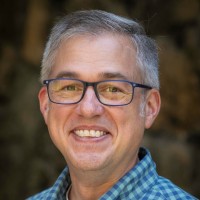 Boyce Griffith is a Professor of Mathematics at the University of North Carolina at Chapel Hill (UNC-Chapel Hill) with a joint appointment in the Lampe Joint Department of Biomedical Engineering at UNC-Chapel Hill and North Carolina State University. He received a PhD in Mathematics from New York University's Courant Institute of Mathematical Sciences in 2005. His interests include mathematical modeling and computer simulation of cardiac mechanics, fluid dynamics, and electrophysiology, with a focus on the fluid dynamics of native and prosthetic heart valves.
Boyce Griffith is a Professor of Mathematics at the University of North Carolina at Chapel Hill (UNC-Chapel Hill) with a joint appointment in the Lampe Joint Department of Biomedical Engineering at UNC-Chapel Hill and North Carolina State University. He received a PhD in Mathematics from New York University's Courant Institute of Mathematical Sciences in 2005. His interests include mathematical modeling and computer simulation of cardiac mechanics, fluid dynamics, and electrophysiology, with a focus on the fluid dynamics of native and prosthetic heart valves.
Wednesday, April 16, 2025
3:30 PM
Zumberg Hall, Room 252 (ZHS 252)
host: Pahlevan
A Quest Towards Load-Bearing Shape-Morphing Structures
Paolo Celli
Assistant Professor
Department of Civil Engineering
Stony Brook University
Stony Brook, NY
Shape-morphing metamaterials, mechanical systems and structures are designed to predictably achieve large shape changes when actuated. These systems are often designed to undergo large deformations when loaded; the issue of turning them into functional, load-bearing structures is seldom considered, even though this is crucial for potential structural applications of such systems. This talk will showcase some of our current activities in this context.
First, we will present a strategy to turn flat arrangements of structural elements into pop-up domes, investigating their load-bearing capacity and comparing them to existing structures such as gridshells. Then, we will illustrate how to create morphing structures that can retain their shape via localized snap-through buckling and without the need for external anchoring; we will also illustrate how these structures can be inverse-designed to achieve desired shapes and to display mechanical memory.

Wednesday, April 23, 2025
3:30 PM
Zumberg Hall, Room 252 (ZHS 252)
host: Plucinsky
Manipulating Mechanical Wave Propagation with Phononic Materials
Kathryn (Katie) Matlack
Associate Professor
Department of Mechanical Science and Engineering
University of Illinois at Urbana-Champaign
Urbana, IL
One grand challenge for materials and structures design is to satisfy multiple conflicting requirements. For example, energy infrastructure, especially those in remote and extreme environments such as offshore wind turbines and nuclear reactors, requires components to operate effectively over long time periods and avoid catastrophic failures. Structural materials in aviation must be lightweight but high in strength, stiff while dampening out harmful vibrations, survive damaging impact events, and interact with complex flows in non-detrimental ways. On smaller length scales, acoustic and ultrasonic sensors require specific frequency and dissipative responses, and need to detect wavelengths that are much smaller than their physical size. This talk focuses on a common theme to these critical engineering problems: understanding how mechanical waves interact with engineered materials across different length and time scales. In particular, the field of phononic materials studies how engineering micro- and meso-scale features in materials and structures can prescribe the frequency and spatial properties of acoustic waves. Features such as spatial periodicity of the material or geometry, resonant inclusions, and nonlinearities can lead to wave propagation and modal properties not found in natural materials. New wave propagation phenomena have been discovered in these material platforms, which has been a direct result of an interdisciplinary research approach, integrating additive manufacturing, acoustics, mechanics, materials science, and design. This presentation will discuss our group’s recent research in phononic materials, focusing on (1) effects nonlinearity on wave propagation in phononic materials, and (2) applications of phononic materials to passive flow control, using reduced order models, finite element simulations, and experiments.
Kathryn (Katie) Matlack is an Associate Professor and Richard W. Kritzer Faculty Scholar in the Department of Mechanical Science and Engineering at the University of Illinois at Urbana-Champaign, where she leads the Wave Propagation and Metamaterials laboratory. Prior, she received her bachelor’s degree in mechanical engineering from MIT, her PhD from Georgia Tech, and was an ETH Postdoctoral Fellow at ETH Zurich. She is a recipient of Young Investigator Awards from both the Air Force Office of Scientific Research and the Army Research Office, the NSF CAREER award, the ASME CD Mote Early Career Award, and the UIUC Dean’s Award for Excellence in Research. She currently serves as an Associate Editor for the Journal of Vibration and Acoustics and Wave Motion.
Wednesday, April 30, 2025
3:30 PM
Zumberg Hall, Room 252 (ZHS 252)
host: Maghsoodi

